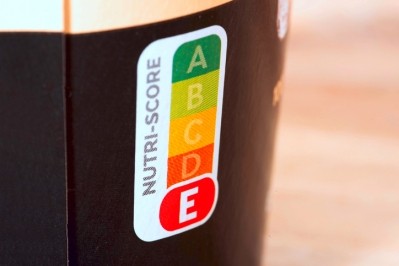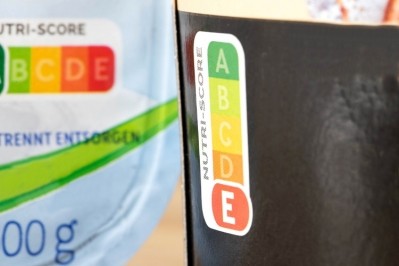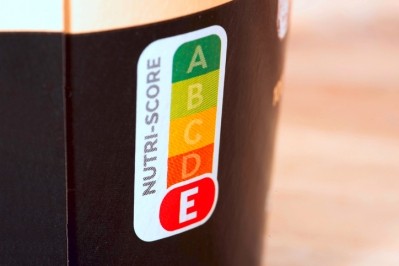Italian Government launches NutrInform Battery app as preferred diet tool

In just a matter of months, the European Commission is expected to announce which EU-wide harmonised nutritional labelling scheme it plans to roll out across the bloc.
Nutri-Score is a favoured contender. Developed in France, the scheme classifies food and beverages according to their nutritional profile by using a colour-coded system with a scale ranging from A (healthier choices) to E (less healthy choices).
At least seven Member States have adopted Nutri-Score as their national voluntary labelling scheme, alongside F&B heavyweights Nestlé, Danone, and Kellogg, among others.
Yet not all across the bloc agree Nutri-Score should be enforced EU-wide. Italy, for one, has long accused the scheme of discriminating against many of the single-ingredient delicacies for which it is famous, such as olive oil, Parma ham and Parmigiano cheese.
In 2020, Italy officially adopted its home-grown challenger scheme, the NutrInform Battery, which unlike Nutri-Score, takes ‘daily intake’ into account.
And now, two years later, a smartphone app has been developed to accompany the scheme. Its makers say it helps consumers to eat in a ‘varied and balanced way’, with a ‘correct’ intake of all food groups, each in the ‘right’ quantities.
Five batteries and portion control
The NutrInform Battery scheme is similar to the UK’s traffic light concept in that it uses columns or batteries to display the percentage of energy, fats, saturated fats, sugars and salt contained in the portion of product in relation to reference daily intake.
The NutrInform app – which is the result of collaboration between Italy’s Ministries of Health; Economic Development; and Agricultural, Food and Forestry Policies; alongside the Italian National Institute of Health (ISS) and the National Research Council of Italy (CNR), among others – is adapted to the standard nutritional requirement of 2,000 kcal per day.
To help consumers follow the ‘principles of the Mediterranean Diet’, the app offers two tools.
The first is the NutrInform Battery label, which is designed to provide the nutritional information of each food in a clear and transparent way. It also indicates the portion size, as suggested by nutritionists.
“Just photograph the EAN code on the back of each packaged food [item] to have all its nutritional information (calories, salt, sugars and fats) on the screen of your smartphone,” explain its developers.
It is possible to change the quantity of suggested portions if the user consumes a greater or lesser amount than indicated.
Tracking nutrients throughout the day
The second tool has been coined the ‘Daily Diet Battery'. This offers consumers a way of tracking their intake throughout the day.
“Each time you consume a food, the data is collected in the app and accumulated to update the Batteries of your Daily Diet,” explain the developers.
“When the Daily Diet Battery for a nutrient is close to filling, you will know that for the rest of the day you will have to avoid further consumption of that nutrient and move towards different types of foods. Provided of course that the energy battery is not completely full!”
The suggested values for calories, salt, sugars and fats not to be exceeded are suggested by the European Food Security Agency (EFSA).
The National Guidelines for Healthy and Correct Nutrition, on which the NutrInform Battery is founded, is based on the Daily Reference Values of Nutrients and Energy for the Italian population (LARN) developed by the Italian Society of Human Nutrition (SINU).
To make ‘life easier’ for shoppers, the app also allows consumers to look beyond packaged products. The nutritional data of more than 200 recipes of dishes usually consumed in Italy – such as popular pasta dishes – are included.
This means that consumers needn’t enter the nutritional data of recipes ingredient by ingredient.
NutrInform criticism
Just as NutrInform Battery’s creators criticise Nutri-Score, so to has the NutrInform Battery scheme been criticised.
The Nutritional Epidemiology Research Team (EREN), made up of researchers from Inserm, Inrae, Cnam, and the Université Sorbonne Paris Nord, argue that NutrInform Battery was developed with ‘internal political and economic issues’ in mind.
A ‘major flaw’ of the NutrInform Battery scheme is its reference to portion, rather than standard reference of 100g of food (or 100ml for liquids), according to the EREN researchers.
“The latter is a recommendation of the WHO and public health structures because it allows for an objective comparison of food products on the same basis and avoids the use of portion sizes that are not standardized and often defined by the manufacturers themselves,” they stress.
“For example, for cheese pizzas, the recommended portion sizes vary from brand to brand, some offering a 100g portion, others 123g, others 150g, others 175g…it is therefore impossible to make the calculation based on portion sizes.”
Caloric intake, however, is calculated per 100g of food.
The researchers also take issue with the battery icon itself, describing the direction of its ‘charge’ as ‘counter-intuitive’.
‘Curiously’, the charging appears to be moving in the opposite direction, they suggested: “The more the battery is ‘discharged’, the better the nutritional quality of the food!”
Nutri-Score 2.0?
The app, which offer new functions for NutrInform Battery users, launches as its competitor scheme Nutri-Score prepares to undergo some changes.
Recommendations suggested and accepted by the seven Member States backing its implementation – Belgium, France, Germany, Luxembourg, the Netherlands, Spain and Switzerland – are designed to better align the nutrition label with dietary guidelines.
FoodNavigator understands the Nutri-Score algorithm will be updated according to these recommendations soon.
The NutrInform Battery launch also comes after the Italian Competition Authority (AGCM) ruled Nutri-Score gives a false impression about the healthiness of a product.
Following an investigation into five companies using Nutri-Score, the AGCM also suggested Nutri-Score could encourage consumer to eat unhealthy amounts of certain foods.
























